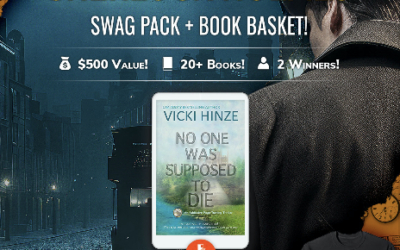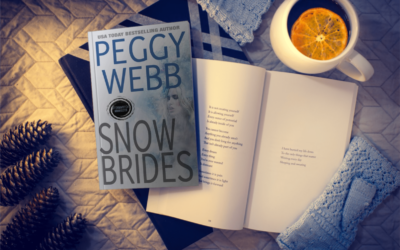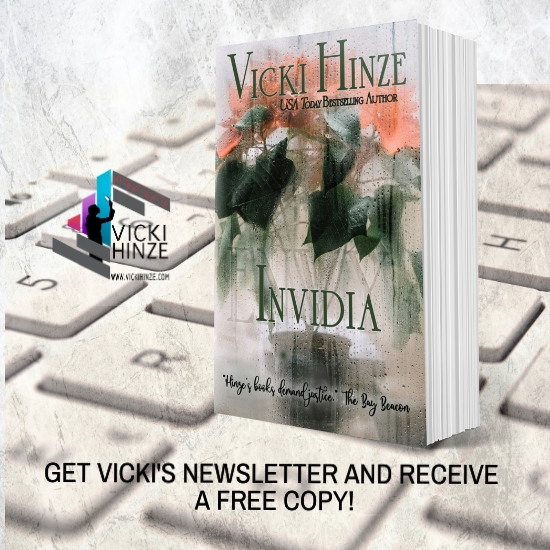Inspiration for books strikes us in different ways:
1. Theme/Statement
2. Plot
3. People
Which comes first doesn’t matter much, provided the author ties the other two ways to it.
Why? Because these three things weave together with Setting and other story elements to make a tapestry–a book. And if they don’t interweave so the threads fit together, well, you won’t have much of a tapestry.
So it’s beneficial to you to develop these elements simultaneously.
For example, in HER PERFECT LIFE, the statement (or reason I wanted to write the book) was to bring to readers’ attention what serving our country can cost the people who do it, those they love and those who live them.
How do I build a protagonist to convey that message?
I chose a female POW. She demonstrated the costs, and helped define the plot: a female pilot crashes, is deemed dead but is taken POW for 6 years. She had a perfect life–all she wanted: a husband, two kids and a great copilot.
Now the story could have gone a lot of ways, depending on what theme or statement I wanted to make. I didn’t want to write about her as a POW, I wanted to write the costs of service. So In Chapter 1, she was rescued. And the rest of the book deals with her coming home, her husband being remarried to a great woman her kids love. She’s a stranger to the kids. And all that was in her perfect life–family, home, career–it’s all gone. Now what?
And that’s where real character development begins.
Remember that characters are admirable people we want to emulate. They’re not like us; they’re like the people we want to be. They do the right thing, or the wrong thing for the right reason–and that includes the antagonist. Even if he’s psychotic, he feels totally justified in what he’s doing. He might be warped, but he doesn’t see that, just as none of us see ourselves as bad people. He sees his actions as reasonable, logical, and maybe even noble.
You build a character based on need–not yours. The story’s. Every choice made, every idea pondered, every single thing you elect to include in the book, you include because it best serves the story.
Anything that fails to meet that test, you ditch. No matter how funny, no matter how strongly it resonates with you, no matter if the rhythm and sheer beauty of the words just sets you aflutter. Ditch it. Be ruthless. Only what best serves the story stays.
Characters, like people, need to be three-dimensional. Physical, Emotional, Spiritual.
Physical: What the character physical looks like. What abilities and skills does s/he need to be able to do what s/he must do in the story? (To be credible, s/he must be capable. This holds true for protagonists and antagonists. Make them strong, wise, sharp, clever–this way they can carry a lot of story weight.)
Where did s/he get those skills? Where do most people with those skills live, or where are they likely to be? (Now, your character has a history–and you’ve got a setting.)
What does the character’s name say about her/him? Is it a name common to the area s/he’s from? Where s/he is now, in the story? What is that community like? Is there a strong, say German influence? Or Hispanic influence? How does that impact your character?
All of these things are defining the physical attributes of the character–and far more. You’re putting flesh and muscles on the bones.
Emotional: Taking into consideration all the above physical aspects, you have also gone a long way to define the emotional demeanor of your character. To do this job, in this place, with this kind of history and experience, this person is apt to have this type of emotional makeup. Coping skills, what s/he loves and hates and fears. What s/he wants–goals and motivations (which you will use as story conflicts). And who is trying to keep him/her from reaching those goals? There’s your antagonist.
Ask why s/he is trying to stop the heroine and you’ve got his/her motivation. And that goes a long way toward defining what he’s like physically and emotionally.
Using opposites works. If he’s an arson investigator, then she’s an arsonist. If the protagonist wants to ban guns, the antagonist is a collector. If the protagonist wants to save the world, then the antagonist wants to destroy it,
Why does opposites work? Because it creates conflict that spontaneously combusts. The opponents are opponents the second they appear.
So what kind of temperament, attitudes and demeanor is the main person who is for and against what you, the author, have to say that you want others to hear? Answer that, and you’ve defined your characters’ emotional states, and honed the definitions on their physical designs.
Spiritual; These people in this situation, in this emotional state are apt to draw on these traits and beliefs. I’m not talking about religion, though that can be part of the definition of this. What belief does your character ascribe to, what philosophy of life. Does s/he believe in truth? If so, does s/he believe truth is immutable, or that you shape and mold it? Does s/he live in black and white? Or in vivid color? In shades of gray?
An example: “One man’s terrorist is another man’s freedom fighter.” Not sure who first said it, but which label a person wears depends on who’s assigning the label. How that person sees himself relates to his spiritual side.
Strong characters, ones we remember, are three-dimensional and have aspects of all three dimensions: physical, emotional and spiritual.
Not only is this essential for crafting a credible story, it’s mandatory for making a reader care.
Look to how we react to books. We might feel drawn to its subject or to where it is set. We might even be drawn to its horror, but we emotionally react to its characters.
Would Harry Potter hold the same appeal if Harry weren’t Harry?
Would Gone With the Wind be as strong without Scarlett or Rhett? Would the story be the same if Melanie were the heroine?
No, on Harry. No, on Scarlett and Rhett. And no on Melanie–that’d be a totally different story.
We love characters, or love to hate them, because we identify with them. In them, we see shards of ourselves, reflections of who we are and what we want–why we want it–and who we want to be.
If we don’t identify with the characters, we do not care what happens to them. If we don’t care what happens to them, we aren’t going to enjoy the book. It’s that simple.
Remember, authors write for a purpose and with purpose. To do so effectively, the reader needs to bond with the characters or you don’t have the right vehicle to convey your message or statement. This is true, even if that purpose is to entertain.
A quick look at Secondary Characters. You create every secondary character in your book to serve a specific story purpose. Maybe s/he is a confidant to the protagonist, a mentor or someone who undermines and assists the antagonist. Know the purpose. What s/he must do in the story helps define who s/he is.
Now that you know what must be done, look for ways to combine these actions. Instead of having three different people do one thing, have one person do three.
My rule of thumb is to kill every secondary character I can possibly kill. If they won’t die, then I let them live. They’ve proven they’ve earned their space in the novel.
What they must do defines who they are, and what attributes and shortcomings they need to be well-rounded, developed characters. They too should be physical, emotional and spiritual human beings. And its through those three dimensions that you create highly individual, real-to-life people instead of cardboard characters.
THAT BRINGS US TO SUBPLOTS
You know what you, the author, wants to say. You know who is going to say it and, if you’ve developed your secondary characters, then you’ve also gone a long way to define your plot and setting. So your book is a vehicle, and its occupants are all on board.
Your plot is the windshield. It’s where you’re going. But that doesn’t make subplots side-trips or back seats. Subplots are more like your car’s rearview and side mirrors.
A rearview is smaller, and what you see through it is a reflection. That’s what a subplot is to a plot. It mirrors or echoes the plot. It relates, it’s interesting and compelling and it stays in secondary position to the plot.
The minute your subplot becomes more interesting or intriguing than your plot, it becomes the plot and your previous plot becomes subplot. Proportion speaks to importance. Importance is designated by story space. Space is premium, and you give only what an event has earned. So significant events and people get a larger share of space than secondary people and events. Plot gets more space than subplots.
Subplots strengthen and reinforce plots. They brace, add deeper dimension, greater understanding. They express motivations, which are often unstated otherwise, or create more significant obstacles than we deemed apparent initially.
For example. In WAR GAMES’ Body Double, the antagonist buries the protagonist in a tomb. She’s alive and he feels this will terrify her because he knows that her father used to beat her and lock her in a wooden box until her bruises healed, so looking at her didn’t offend him.
But he doesn’t know that the protagonist used to hide in the box to keep from getting beaten. It was the one place her father would never think to look for her.
Now, without that subplot being interwoven into the story, her being locked in a tomb wouldn’t hold the same level of significance. Her reaction wouldn’t have the same connotations, either. The subplot put down the foundation for the plot, strengthened it, reinforced it, and helped characterize the protagonist–and because he did this to her, it helped characterize the antagonist, too.
I’ve incorporated many of the lessons we’ve learned and the myths passed on about characters rather than setting them out on their own because of time constraints. If you’re not clear on that, then do a review of the archetypes and then look at unforgettable characters and note the things they have in common. Equally important, notice the attributes that are absent.
One last bit of advice in building your character cast. Love them all–protagonist or antagonist, primary character or secondary. If you do, it shows in the work on a level that is nearly subliminal. It infuses the work with layers you don’t often realize are there until much later. It’s almost magical, the way relevant tidbits appear and insert themselves.
Conversely, if you don’t love them and respect them, then that shows, too. And your magic becomes a nightmare.
Building story people takes time and effort, but the investment is the kind of thing that makes readers stand in line for hours to get “the next book” or read what the author wrote long after the author is no longer here.
Remember, there’s power in the pen. Power to captivate, convince, entertain and open closed minds. The story itself doesn’t do those things; the characters the author has built to live that story does, and those characters have the power to change lives. ❧
Note:
here are a lot of articles in my online library for writers at www.vickihinze.com on character and character development. One you should definitely look at is: Creating Unforgettable Characters. You might also take a look at the articles on Dialogue, because how we say what we say characterizes us, too.
There are a lot of different articles on characterization. You should also review the in depth series on Plot and The Fictional Dream.
The series on plotting contains more specific information along with examples on subplots.
Be aware that I went through a “goofy title” phase and so articles like Sunshine and Diamonds are on character, too. It seemed like a good idea at the time…
Blessings,
Vicki
Vicki Hinze
©2007
Printable PDF: How-To Build a Character Cast.pdf




